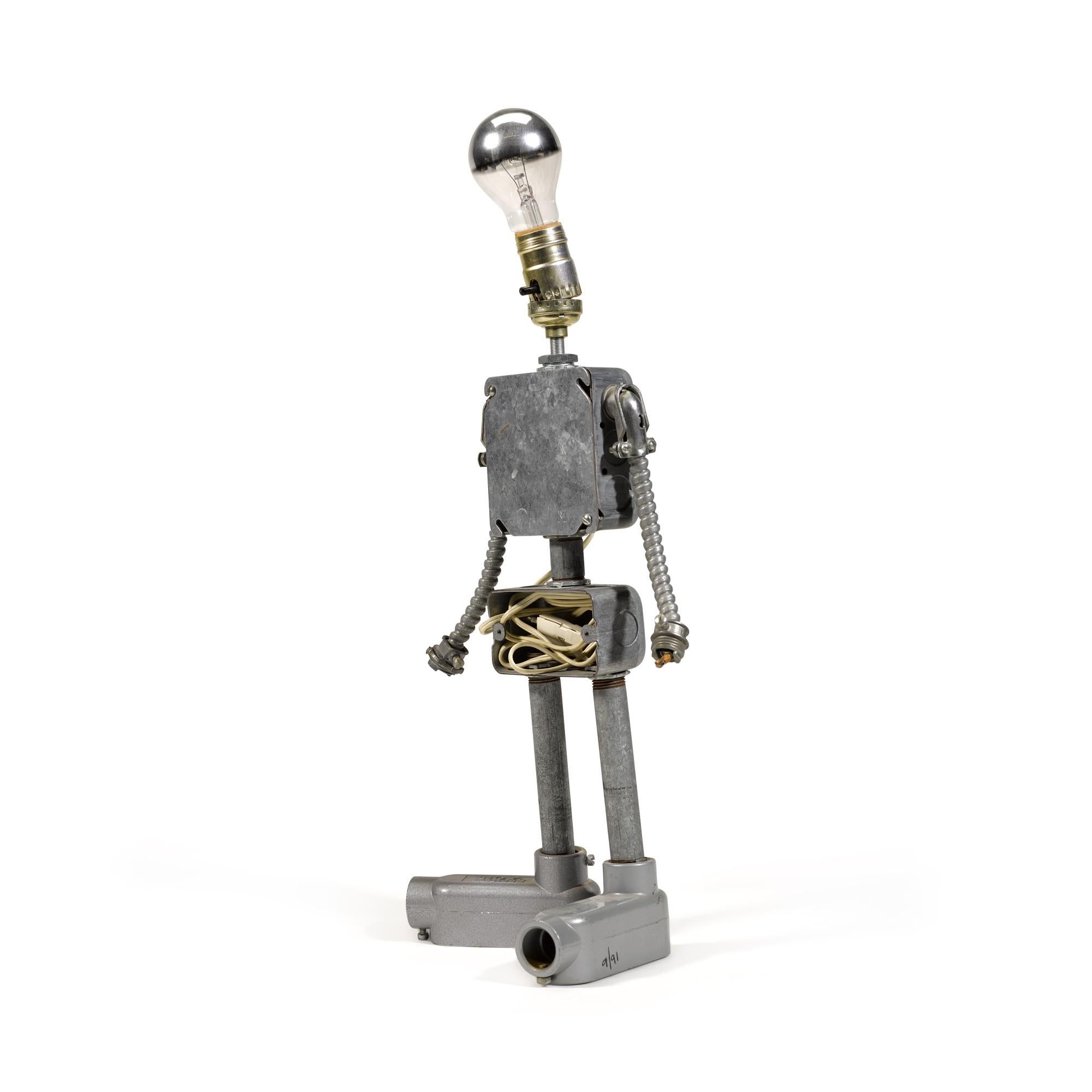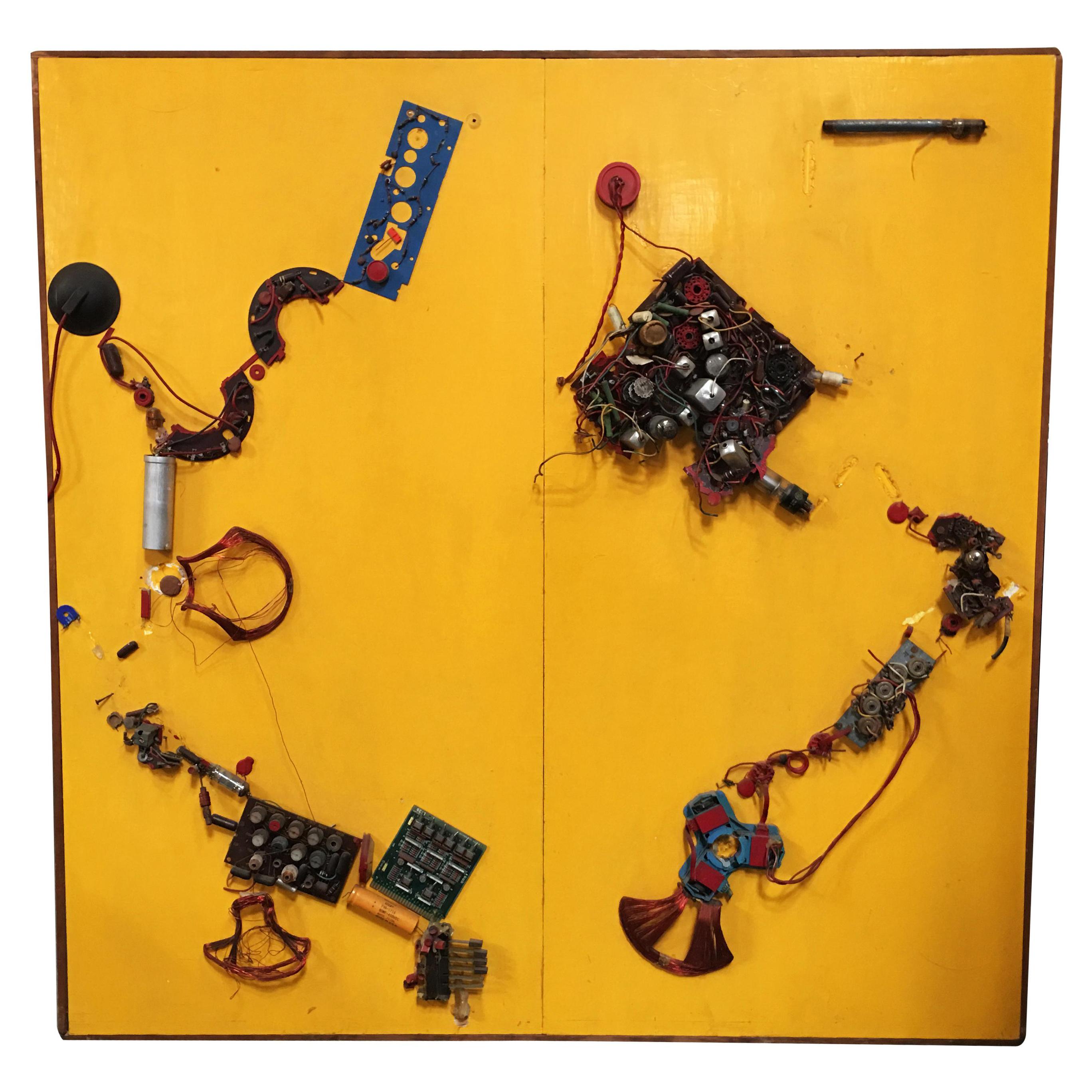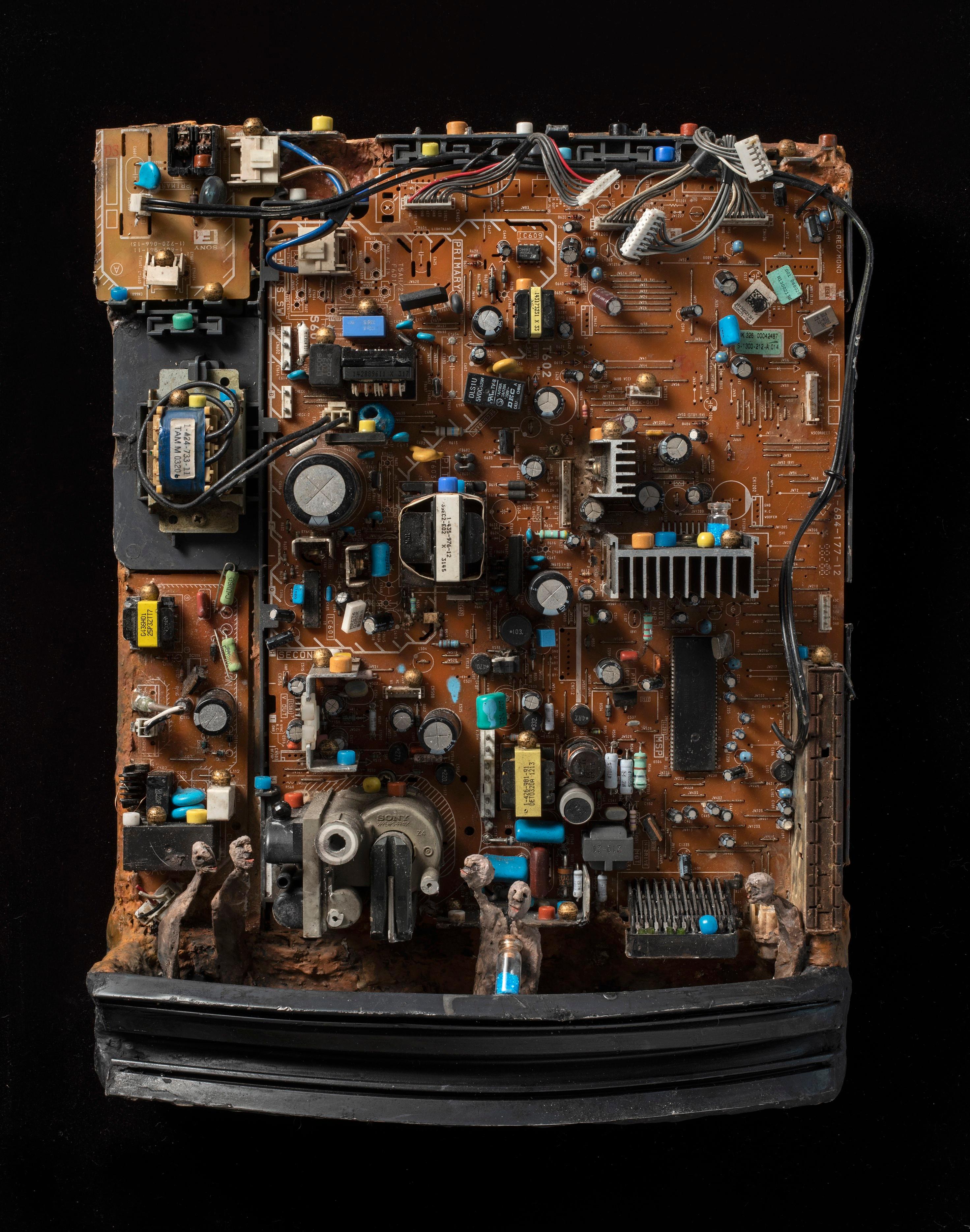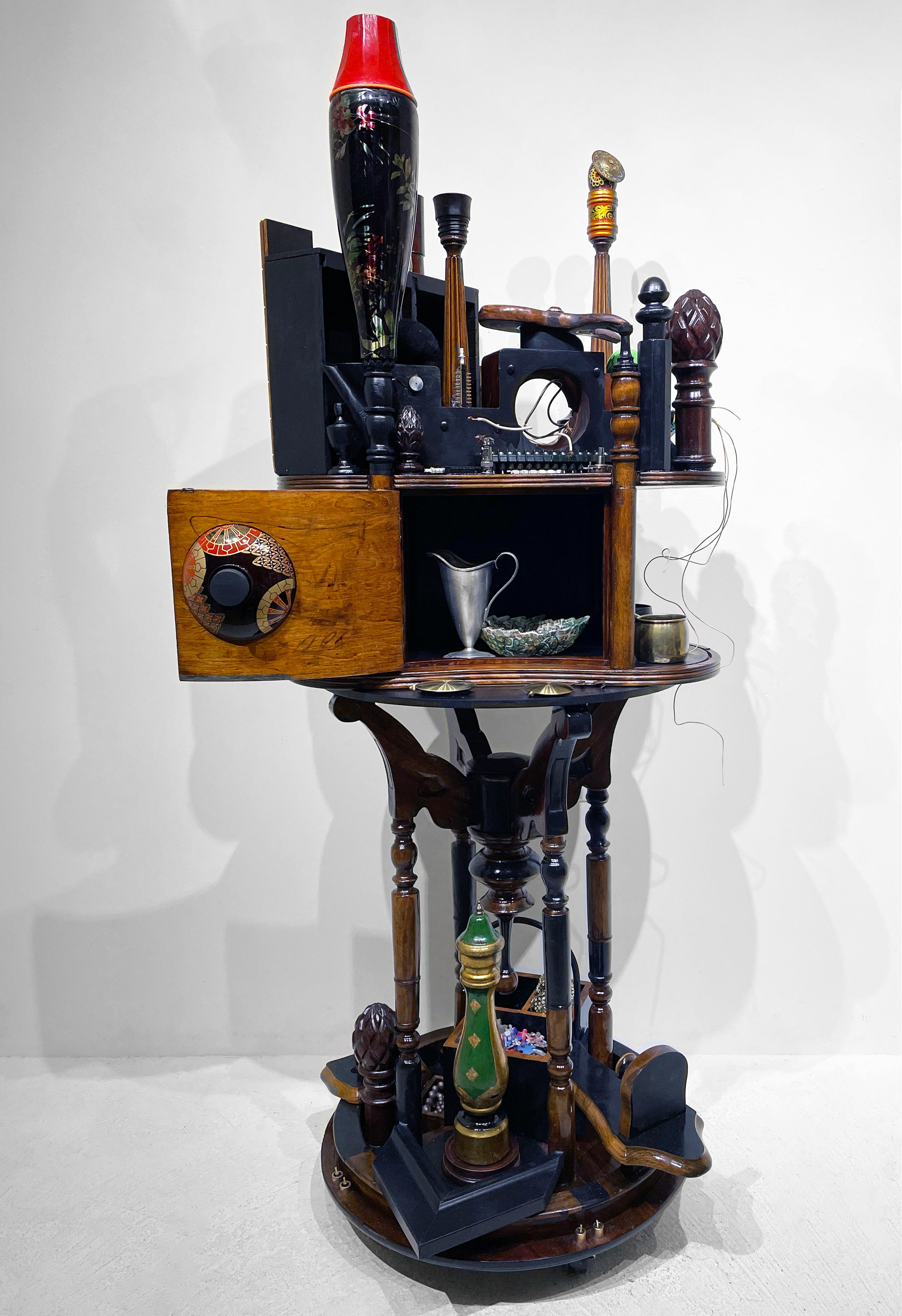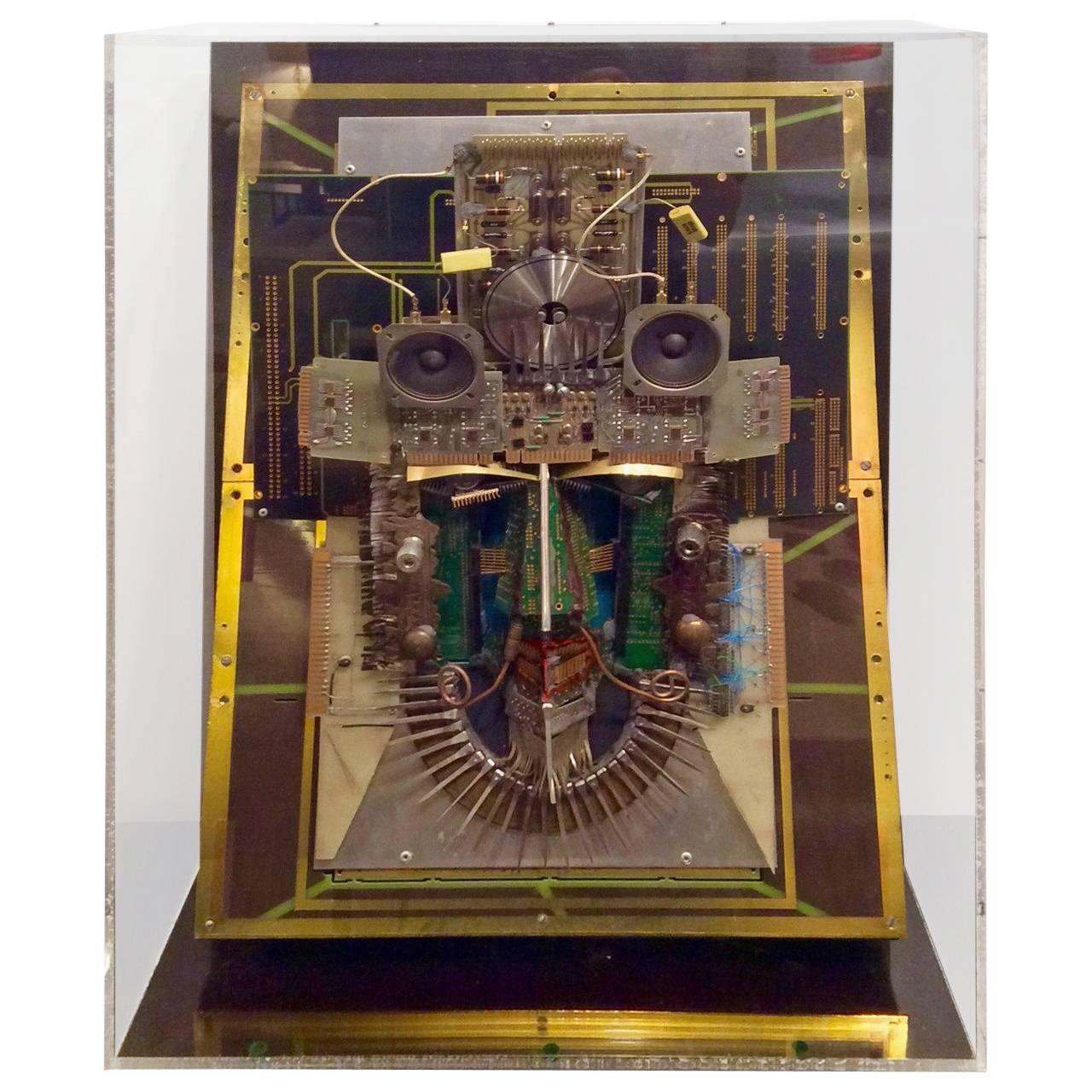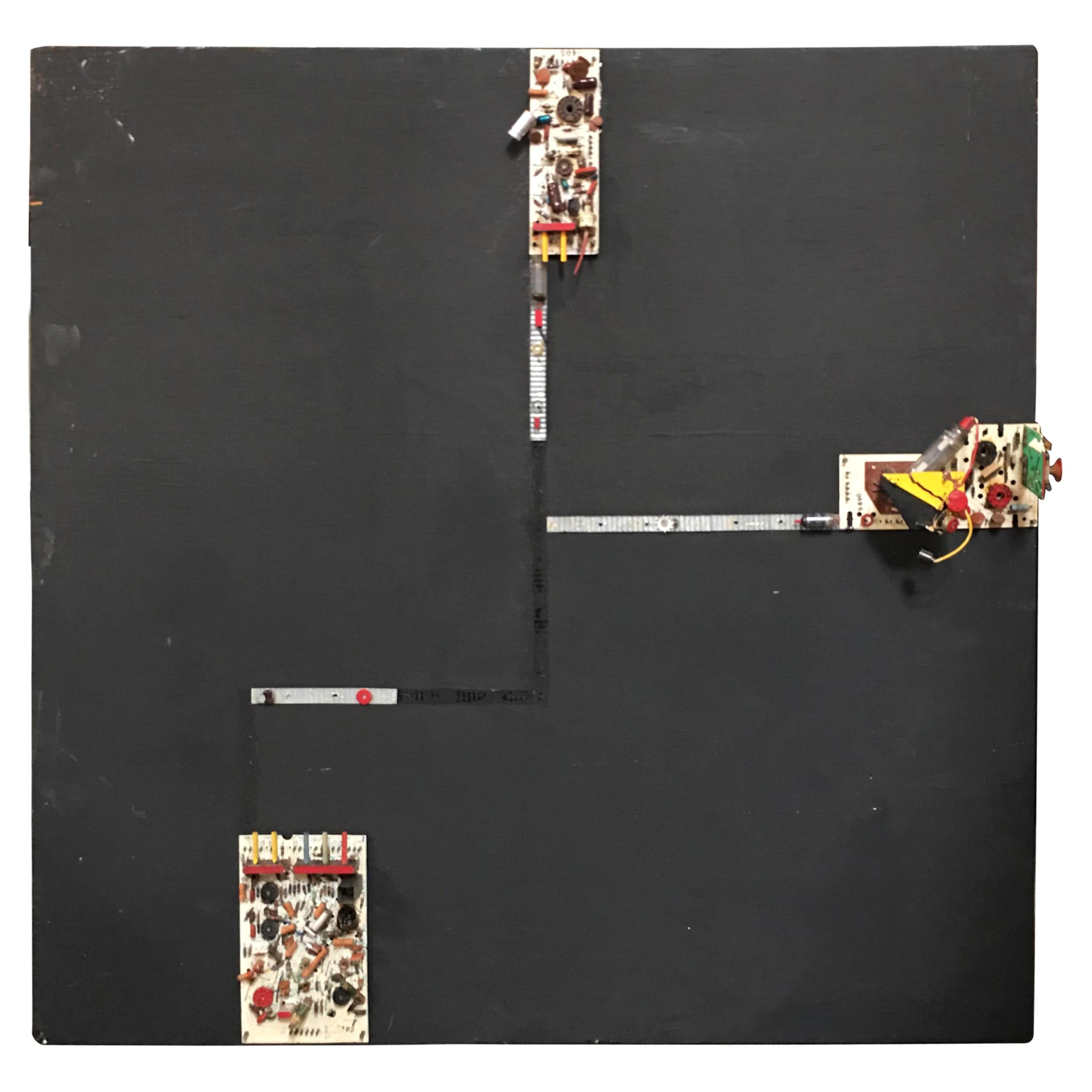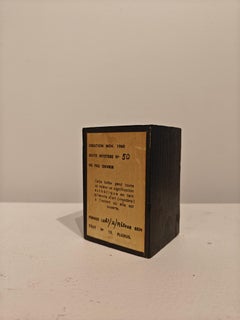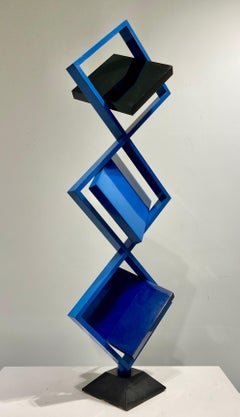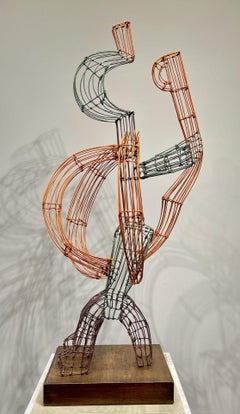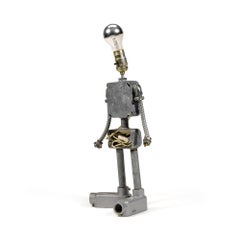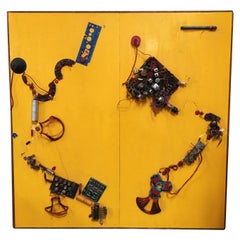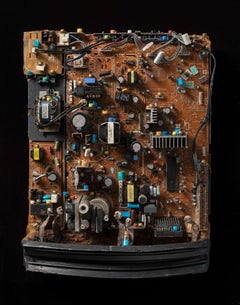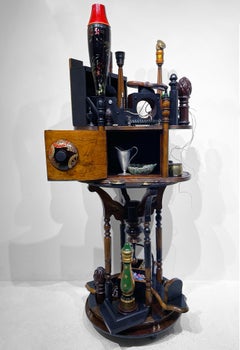Items Similar to "Happy New Year" Nam June Paik and Charlotte Moorman, Fluxus Electric Sculpture
Want more images or videos?
Request additional images or videos from the seller
1 of 6
Nam June Paik"Happy New Year" Nam June Paik and Charlotte Moorman, Fluxus Electric Sculpturecirca 1970
circa 1970
$3,500
£2,657.14
€3,039.20
CA$4,890.01
A$5,438.76
CHF 2,839.95
MX$66,183.87
NOK 36,270.49
SEK 34,015.32
DKK 22,682.73
Shipping
Retrieving quote...The 1stDibs Promise:
Authenticity Guarantee,
Money-Back Guarantee,
24-Hour Cancellation
About the Item
Nam June Paik and Charlotte Moorman
Happy New Year, circa 1970
Signed by both artists
Electronic circuit board
8 1/4 x 9 1/4 x 1 1/4 inches
Nam June Paik (1932–2006), internationally recognized as the "Father of Video Art," created a large body of work including video sculptures, installations, performances, videotapes and television productions. He had a global presence and influence, and his innovative art and visionary ideas continue to inspire a new generation of artists.
Born in 1932 in Seoul, Korea, to a wealthy industrial family, Paik and his family fled Korea in 1950 at the outset of the Korean War, first to Hong Kong, then to Japan. Paik graduated from the University of Tokyo in 1956, and then traveled to Germany to pursue his interest in avant-garde music, composition and performance. There he met John Cage and George Maciunas and became a member of the neo-dada Fluxus movement. In 1963, Paik had his legendary one-artist exhibition at the Galerie Parnass in Wuppertal, Germany, that featured his prepared television sets, which radically altered the look and content of television.
After immigrating to the United States in 1964, he settled in New York City where he expanded his engagement with video and television, and had exhibitions of his work at the New School, Galerie Bonino and the Howard Wise Gallery. In 1965, Paik was one of the first artists to use a portable video camcorder. In 1969, he worked with the Japanese engineer Shuya Abe to construct an early video-synthesizer that allowed Paik to combine and manipulate images from different sources. The Paik-Abe video synthesizer transformed electronic moving-image making. Paik invented a new artistic medium with television and video, creating an astonishing range of artworks, from his seminal videotape Global Groove (1973) that broke new ground, to his sculptures TV Buddha (1974), and TV Cello (1971); to installations such as TV Garden (1974), Video Fish (1975) and Fin de Siecle II (1989); videotapes Living with the Living Theatre (1989) and Guadalcanal Requiem (1977/1979); and global satellite television productions such as Good Morning Mr. Orwell, which broadcast from the Centre Pompidou in Paris and a WNET-TV studio in New York City Jan. 1, 1984.
Paik has been the subject of numerous exhibitions, including two major retrospectives, and has been featured in major international art exhibitions including Documenta, the Venice Biennale and the Whitney Biennial. The Nam June Paik Art Center opened in a suburb of Seoul, South Korea, in 2008.
Charlotte Moorman was an American cellist and performance artist who was a strong driving force for avant-garde music; she was dubbed the ‘Jean d’Arc of new music’ by composer Edgar Varese. In 1963, Moorman founded the Annual Avant Garde Festival in New York, which she directed for two decades.
Moorman frequently collaborated with Korean Nam June Paik over a decades-long period who was known as the ‘father of video art’. Paik created some works specifically with Moorman in mind including TV Bra for Living Sculpture (1969) and TV-Cello (1971).
Following Moorman’s death from breast cancer in 1991, Paik made a film entitled Topless Cellist (1995) about her life and avant-garde performances. Moorman also collaborated with other Fluxus artists including Carolee Schneemann, Joseph Beuys, Takehisa Kosugi and Jim McWilliams (Sky Kiss, 1968-1980).
- Creator:Nam June Paik (1932 - 2006, American, Korean)
- Creation Year:circa 1970
- Dimensions:Height: 8.25 in (20.96 cm)Width: 9.25 in (23.5 cm)Depth: 1.25 in (3.18 cm)
- Medium:
- Movement & Style:
- Period:
- Condition:
- Gallery Location:New York, NY
- Reference Number:1stDibs: LU1841216061362
About the Seller
5.0
Platinum Seller
Premium sellers with a 4.7+ rating and 24-hour response times
Established in 2022
1stDibs seller since 2022
114 sales on 1stDibs
Typical response time: <1 hour
- ShippingRetrieving quote...Shipping from: New York, NY
- Return Policy
Authenticity Guarantee
In the unlikely event there’s an issue with an item’s authenticity, contact us within 1 year for a full refund. DetailsMoney-Back Guarantee
If your item is not as described, is damaged in transit, or does not arrive, contact us within 7 days for a full refund. Details24-Hour Cancellation
You have a 24-hour grace period in which to reconsider your purchase, with no questions asked.Vetted Professional Sellers
Our world-class sellers must adhere to strict standards for service and quality, maintaining the integrity of our listings.Price-Match Guarantee
If you find that a seller listed the same item for a lower price elsewhere, we’ll match it.Trusted Global Delivery
Our best-in-class carrier network provides specialized shipping options worldwide, including custom delivery.More From This Seller
View All"Mystery Box (Boîte mystère)" Ben Vautier, Fluxus Movement Conceptual Sculpture
By Ben Vautier
Located in New York, NY
Ben Vautier
Mystery Box (Boîte mystère), 1965
Painted wood with letterpress label
3 13/16 × 2 3/4 × 2 7/16 inches
Ben Vautier was a French artist known for his text-based paintings...
Category
1960s Conceptual Abstract Sculptures
Materials
Wood, Paper
"Secret Santa" Takako Saito, Fluxus Movement Conceptual Construction, Sculpture
Located in New York, NY
Takako Saito
Secret Santa , 1965
Stamped inscribed in pen recipients name
Wood construction
1 1/2 x 1 1/4 x 1 1/4 inches
Takako Saito is a Japanese artist closely associated with F...
Category
1960s Conceptual Abstract Sculptures
Materials
Wood
"Kinetic Sculpture" Roger Phillips, 1985 Rotating Blue Constructivist Sculpture
By Roger Phillips
Located in New York, NY
Roger Phillips
Kinetic Sculpture
Painted iron and aluminum on walnut plinth base
44 1/2 inches high x 13 inches wide x 7 3/4 inches deep
oger Phillips was born in New York City in ...
Category
1980s Constructivist Abstract Sculptures
Materials
Enamel, Iron
"Hitch Hiked" Hayward Oubre, Painted Wire Sculpture, Southern Black Artist
Located in New York, NY
Hayward Oubre
Hitch Hiked, 1960
Signed on Base: OUBRE 60
Painted wire sculpture
45 H. x 21 W. x 19 D. inches
Provenance:
Estate of the Artist
Deeply at...
Category
1960s Figurative Sculptures
Materials
Wire
"Monument 8" Calvin Marcus, Mixed Media Construction Contemporary Sculpture
Located in New York, NY
Calvin Marcus
Monument 8, 2018
Wood, glass, hot glue, cardboard, plastic, paper pulp, sulfur, ash, gesso, Cel-Vinyl, flashe, watercolor and other media sculpture
22" high x 13 1/4" w...
Category
2010s Contemporary Figurative Sculptures
Materials
Glass, Plastic, Wood, Paper, Glue, Mixed Media, Watercolor, Cardboard
$9,600 Sale Price
20% Off
"Moon" Ray Johnson, Minimalist Mixed Media on Masonite, Fluxus Movement
By Ray Johnson
Located in New York, NY
Ray Johnson
Moon
Mixed media on Masonite
8 3/4 x 6 1/2 inches
Once described as New York’s “most famous unknown artist,” Ray Johnson was a renowned maker of meticulous collages and...
Category
1960s Conceptual Mixed Media
Materials
Masonite, Mixed Media
You May Also Like
Robot
By Nam June Paik
Located in London, GB
Mixed metal multiple with lightbulb, 1990, signed in black ink, dated, numbered from an edition of 91 unique works, published by Edition Mönchehaus-Museum, Goslar, Germany, height: 5...
Category
1990s Modern Figurative Sculptures
Materials
Metal
$25,352
Abstract "Radio Tronics" Artography Lrg Mixed Media Sculpture by Pasqual Bettio
By Pasqual Bettio
Located in Van Nuys, CA
Artography Wall Sculpture titled "Radio Tronics" Artography Wall Sculpture by Pasqual Bettio. Bio Senior Senator ret. J. Pasqual Bettio F.R.P.S. started his artistic career after gra...
Category
Vintage 1980s American Wall-mounted Sculptures
Materials
Wood
$8,855 Sale Price
36% Off
Outsider Art Wall Sculpture: 'Electric Factory'
By Gerard Cambon
Located in New York, NY
Gérard Cambon was born in 1960 in Toulouse (Fr).
He has a degree in political science and is a self-taught artist.
In the earlier years of his life practiced and experimented with c...
Category
2010s Outsider Art Figurative Sculptures
Materials
Metal
Linda Stein, Favorites 1232 - Contemporary Art Mixed Media Assemblage Sculpture
Located in New York, NY
This work from Linda Stein's Displacement From Home series draws from the tradition of wunderkammer/cabinets of curiosities to highlight the global displacement and traumatic memory ...
Category
2010s Contemporary Abstract Sculptures
Materials
Metal
$36,000 Sale Price
20% Off
George Dergalis 1988 Unique Sculpture of Old Computer Parts
By George Dergalis
Located in Palm Springs, CA
A signed rather unique wall sculpture comprised of old computer chips and equipment. It is housed in a Lucite frame. It is dated 1988.
There are some miss...
Category
Vintage 1980s American Wall-mounted Sculptures
Abstract "My First Tronic" Artography Mixed-Media Sculpture by Pasqual Bettio
By Pasqual Bettio
Located in Van Nuys, CA
Artography wall sculpture titled "My first Tronic" Artography wall sculpture by Pasqual Bettio.
Bio
Senior Senator ret. J. Pasqual Bettio F.R.P.S. started his artistic career aft...
Category
Vintage 1980s American Wall-mounted Sculptures
Materials
Wood
$8,855 Sale Price
36% Off
More Ways To Browse
Electric Sign Vintage
Vintage Television Sets
Breast Sculpture
Vintage Satellite
Japanese Buddha Sculpture
Japanese Fish Sculpture
Garden Fish Sculptures
Happy Buddha
Vintage Carolee
Carolee Schneemann
Portable Television
Vintage Portable Tvs
Vintage Circuit Board
London Midland And Scottish Railways
Michael Swan
Oil Teddy Bear
Retro Swiss Ski Posters
Sylvester Stallone
